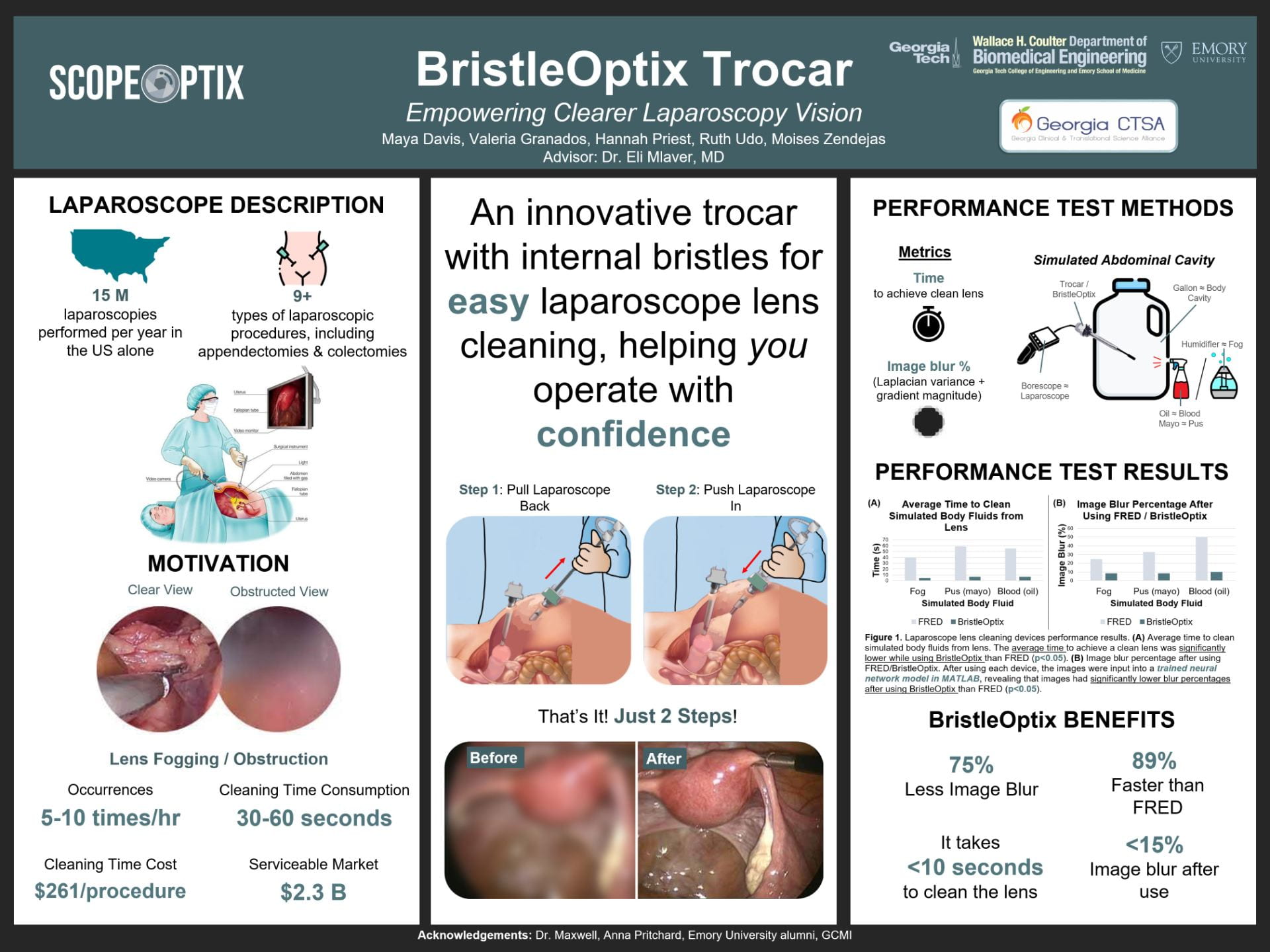Get to know our team on LinkedIN
Maya Davis, Hannah Priest, Valeria Granados, Ruth Udo, Moises Zendejas
ScopeOptix
Innovative trocar with internal bristles for easy laparoscope cleaning.
Project Description:
The BristleOptix Trocar is a novel laparoscopic lens cleaning device aimed at addressing the persistent issue of lens cleaning and obstructions during laparoscopic procedures which occur 5-10 times per hour. Laparoscopies are minimally invasive surgeries that use a laparoscope, a thin rod with a camera and light source at the tip, in gynecology, gastroenterology, and urology for various diagnoses and treatments. However, the challenge of an unclear lens significantly hampers surgical efficiency and safety since existing solutions such as anti-fogging solutions, preheating laparoscopes, and tapping against organs offer only temporary effects and pose risks to patients. Given the wide extent of this issue, the total addressable market for laparoscopic and robotic surgeries is estimated at $5.7 billion annually in the US, with a serviceable addressable market of $2.3 billion for non-robotic laparoscopies. Therefore, a more efficient solution, the BristleOptix Trocar, offers significant market potential as it incorporates bristle-like flaps with high absorbency cotton gauze pads, designed to clean the laparoscope lens without needing to remove it from the trocar. Testing revealed that each set of flaps was capable of cleaning the lens 18-22 times, and image blur was reduced by 75% in comparison to FRED, a commonly used anti-fogging solution. It took less than 10 seconds to clean the lens in comparison to FRED which took an average of 51 seconds. Thus, the BristleOptix Trocar demonstrated superior performance, requiring less time for lens cleaning and providing clearer vision after use. This device’s design positions it as a promising advancement in the field of minimally invasive surgery, helping surgeons operate with confidence.



